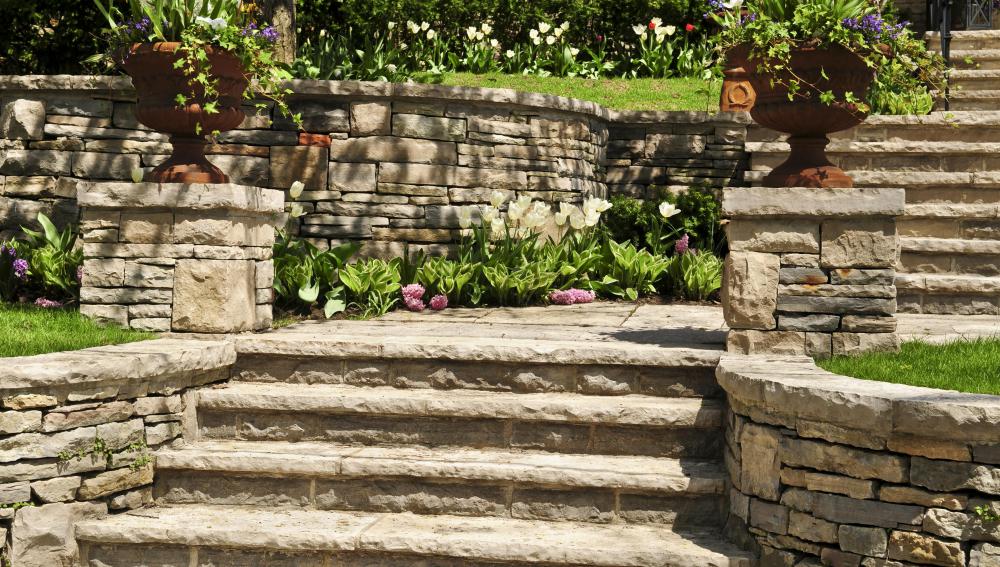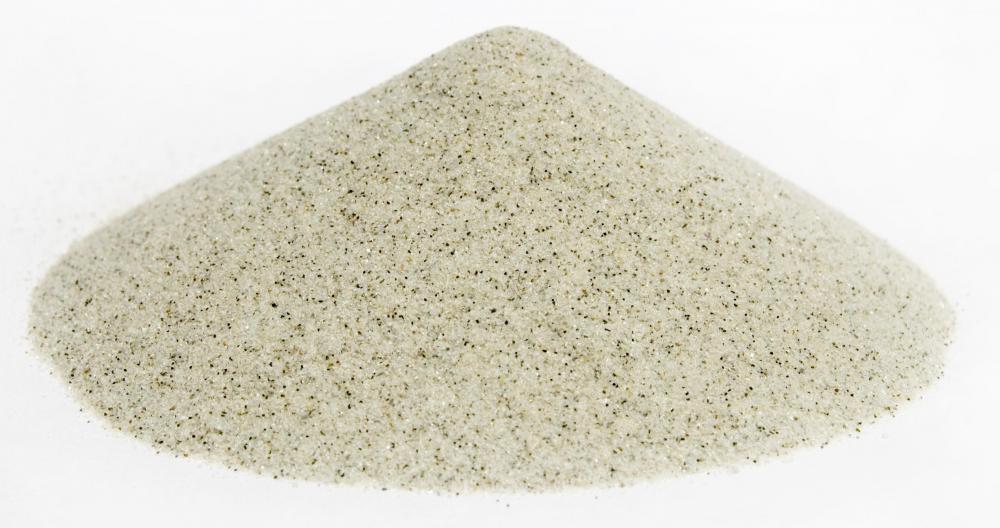At HomeQuestionsAnswered, we're committed to delivering accurate, trustworthy information. Our expert-authored content is rigorously fact-checked and sourced from credible authorities. Discover how we uphold the highest standards in providing you with reliable knowledge.
What are Retaining Wall Blocks?
Usually formed from some type of aggregate and light concrete, retaining wall blocks are sturdy and easy to use. Aggregate is simply a compilation of materials that may include sand, stone and other similar substances, which is used to make up the bulk of the blocks. Retaining wall blocks are excellent for building low walls in the yard or the garden. They are used for both functional and decorative purposes.
The most popular styles of blocks are those that interlock and can be assembled without the use of mortar. These blocks are made to fit snugly and create a solid structure without the extra effort and expense of adding mortar. They may be flat on all sides or flat on three sides with one rounded end. The rounded end may be rough or smooth. Many people find curved blocks more attractive than other styles, but they also tend to cost a bit more.

Interlocking retaining wall blocks are available in different styles. Those designed for large walls or walls that require a superior degree of soil retention have flanges that fit into niches in another block. For extra sturdiness, some blocks have holes through them that are aligned with holes in the block below, through which pins are driven to keep the blocks in place. Others have a simple "lip" or groove along the bottom that partly covers the block underneath it.

Many times, retaining wall blocks are used to create a tiered or stair step design. This type of design works well for sloped yards, not only because it is attractive, but also because it helps create a better system for drainage. Walls must be level, so you must begin with a level surface and continue leveling each layer of blocks as you build. You must also backfill each layer of blocks with crushed rock, sand, gravel or soil to make the wall sturdy.

Completing your yard or garden with retaining wall blocks is the perfect project for the do-it-yourself individual or the entire family. While it is a bit demanding physically, it is a simple process. As long as retaining wall blocks are installed properly, the finished effect will be attractive, functional and well worth the effort.
AS FEATURED ON:
AS FEATURED ON:














Discussion Comments
Try Formabloks next time! No core filling, no cutting, no concern about drainage.
I love the interlocking retaining wall stones. I think that they make the best walls, because there are no huge gaps between stones, and everything just fits together so snugly.
@OeKc05 – That sounds like one beautiful retaining wall! I would have to have someone build something like that for me, because it sounds very complex.
I did manage to make my own cement retaining wall with a little help from an online guide. Instead of buying retaining wall blocks, I used a bunch of rocks and made a frame out of wire.
After I had the wire frame constructed, I pushed rocks into various spaces of it. Then, I poured the concrete into the frame. It made the retaining wall one solid piece, and it was fairly easy to do.
I wanted to build a retaining wall for my flower garden. I didn't want to plant the flowers on the flat ground, so I thought a retaining wall would be a good way to get a raised bed.
I used retaining wall blocks that look like rough stone. They are roughly rectangular, though they are not uniform. I think that the variance in texture and dimension make them interesting.
You can get really creative with building a retaining wall. A lot of people just stick to the solid blocks in a straight line, but there are so many other options out there.
My neighbor has a really steep wall, so she also has a super fancy retaining wall. It was made from rounded blocks that look like big stones.
She has two semi-circular walls surrounding two big trees on the hillside. They are connected by a wall of stairsteps that is slightly higher up the hill than the other walls.
Since everything is connected, it is really sturdy. People always notice it as they drive past, because it is far beyond ordinary.
You will need to dig a trench for your retaining wall. The depth of the trench will depend on the height of the wall.
To prevent soil from slowly washing away, it is recommended that either French drain be used, or that landscape fabric is placed behind the wall. Both of these methods will slow down soil from washing out.
Post your comments